10 Cloverfield Lane arrived five years ago this month, and it serves as an interesting time capsule. It’s an ambitious and underappreciated thriller, one that offers a snapshot of the decade’s simmering tensions.
10 Cloverfield Lane is arguably best understood as part of a wave of intensely paranoid and claustrophobic thrillers that arrived between 2015 and 2016. Characters in these thrillers often found themselves trapped or confined, at the mercy of a seemingly hostile world outside and often a more immediate threat inside. It’s an unexplored trend in the pop culture of that moment. Examined in hindsight, it feels hauntingly prescient.
Quentin Tarantino’s The Hateful Eight reimagined John Carpenter’s The Thing as a western. Jeremy Saulnier’s Green Room was an intense thriller about being trapped with Neo-Nazis in the Oregon wilderness. This fear simmered in period films like The Revenant and The Witch, which reimagined the American frontier as a claustrophobic and suffocating nightmare. The paranoia and sense of containment even filtered through into awards fare, literally in Room and metaphorically in Carol.
In its own way, 10 Cloverfield Lane feels as in tune with this wave of horror cinema as the original Cloverfield did with the wave of found-footage horror that permeated pop culture in the early 21st century. Critics and academics have generally read the explosion in found-footage first-person horror in films like Paranormal Activity, [Rec], and The Last Exorcism as a response to 9/11, shaped and informed by the use of video and camera footage in news coverage of the event.
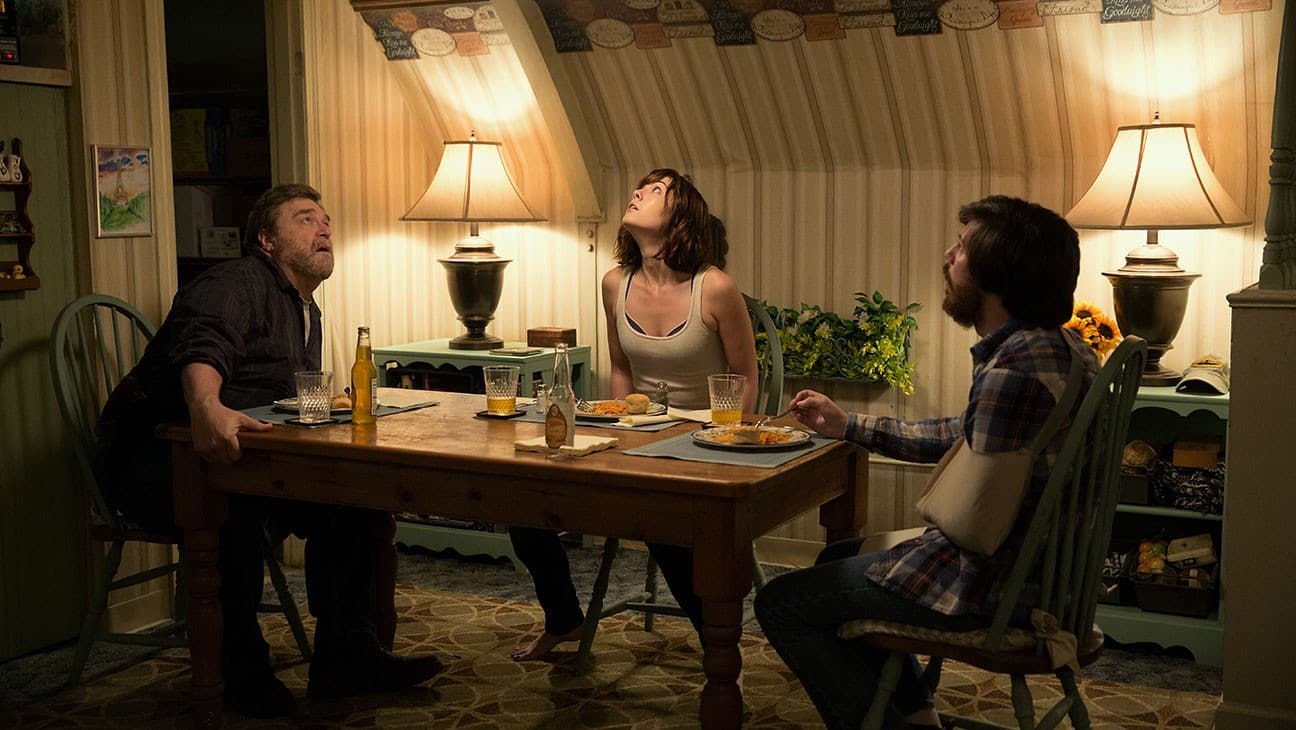
Of course, 10 Cloverfield Lane is not a direct sequel to Cloverfield. Star Mary Elizabeth Winstead classified it as a “spiritual” companion to the original film. In fact, the “Cloverfield” brand was attached quite late in production; the original script had been titled The Cellar. The cast and crew did not know about the rebranding until the trailer dropped. It was a similar process to what would later happen with God Particle, the film that would become The Cloverfield Paradox.
To be fair, there were pragmatic reasons to make the connection. Cloverfield was a known (and lucrative) quantity in a market increasingly driven by existing intellectual property. However, it also suggests an anthology format similar to Rod Serling’s The Twilight Zone: standalone horror and science fiction allegories tied together under a similar banner. Although producer J.J. Abrams had not intended that comparison at first, when it was made to him he conceded, “I love that”.
Like more recent science fiction films like The Vast of Night or Vivarium, 10 Cloverfield Lane hearkens back to Rod Serling’s iconic anthology. It is not simply the film’s use of metaphor, but also a stylistic sensibility that evokes a broader anxiety around the 1950s nostalgia that had taken hold of contemporary culture. Even before 10 Cloverfield Lane becomes a world of jukeboxes and bomb shelters, its isolated gas stations and country roads evoke an older archetypal Americana.
10 Cloverfield Lane is a thematically unified piece of work. It works repeatedly as allegory, reframing its central metaphor not once but twice. It is a film firmly anchored in the perspective of its protagonist, Michelle (Winstead). Even when Michelle escapes into the wide open at the film’s climax, director Dan Trachtenberg keeps the camera firmly on her face. Even in widescreen, standing by vast open cornfields, Trachtenberg holds on intense close-ups on his protagonist.
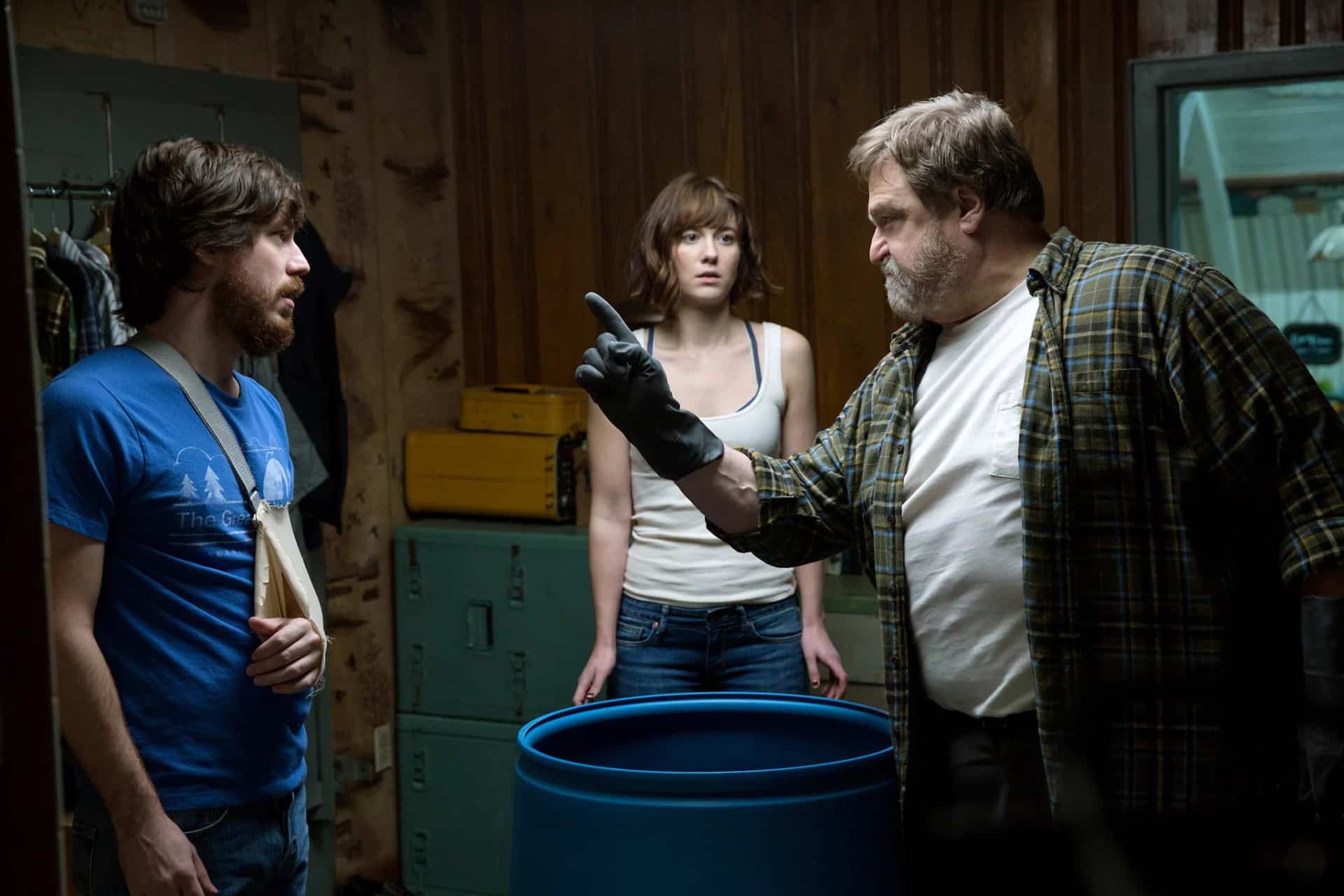
The opening scene effectively sets the tone, as Michelle desperately flees from her fiancé Ben (Bradley Cooper). The particulars of the relationship between Michelle and Ben are kept oblique and abstract, suggested more by imagery and tone than by exposition. The film’s opening shot finds a city framed behind a window, the crisscross pattern suggesting a prison cell. Even though Ben is absent, Michelle is panicked. She moves quickly, as if afraid she might be caught.
It’s a sequence that recalls Cecilia Kass’ (Elisabeth Moss) escape from Adrian Griffin (Oliver Jackson-Cohen) at the start of Leigh Whannell’s The Invisible Man. Michelle has to use a screwdriver to open a drawer to retriever her belongings. The film is never explicit about why Michelle is leaving Ben, with Ben only making fleeting reference to “an argument,” but 10 Cloverfield Lane has been read consistently and repeatedly as a metaphor for abuse.
In that opening sequence, composer Bear McCreary’s score quotes from the Latin hymn Dies Irae, framing this departure as something equivalent to “the day of judgment.” Michelle’s hasty gathering of her things disturbs a framed photo as the soundtrack rumbles like the approaching T-Rex in Jurassic Park. Trachtenberg is using cinematic language that evokes apocalypse or armageddon. In its own way, Michelle leaving Ben is presented as the end of the world itself.
Michelle flees the city into the wilderness. However, Michelle is soon trapped again, something that Trachtenberg foreshadows with overhead shots of bridge supports that reflect the crisscross prison pattern of the apartment that she shared with Ben. In the manner of classic science fiction allegory, 10 Cloverfield Lane is structured so that Michelle is forced to directly confront the realities that she had earlier avoided.
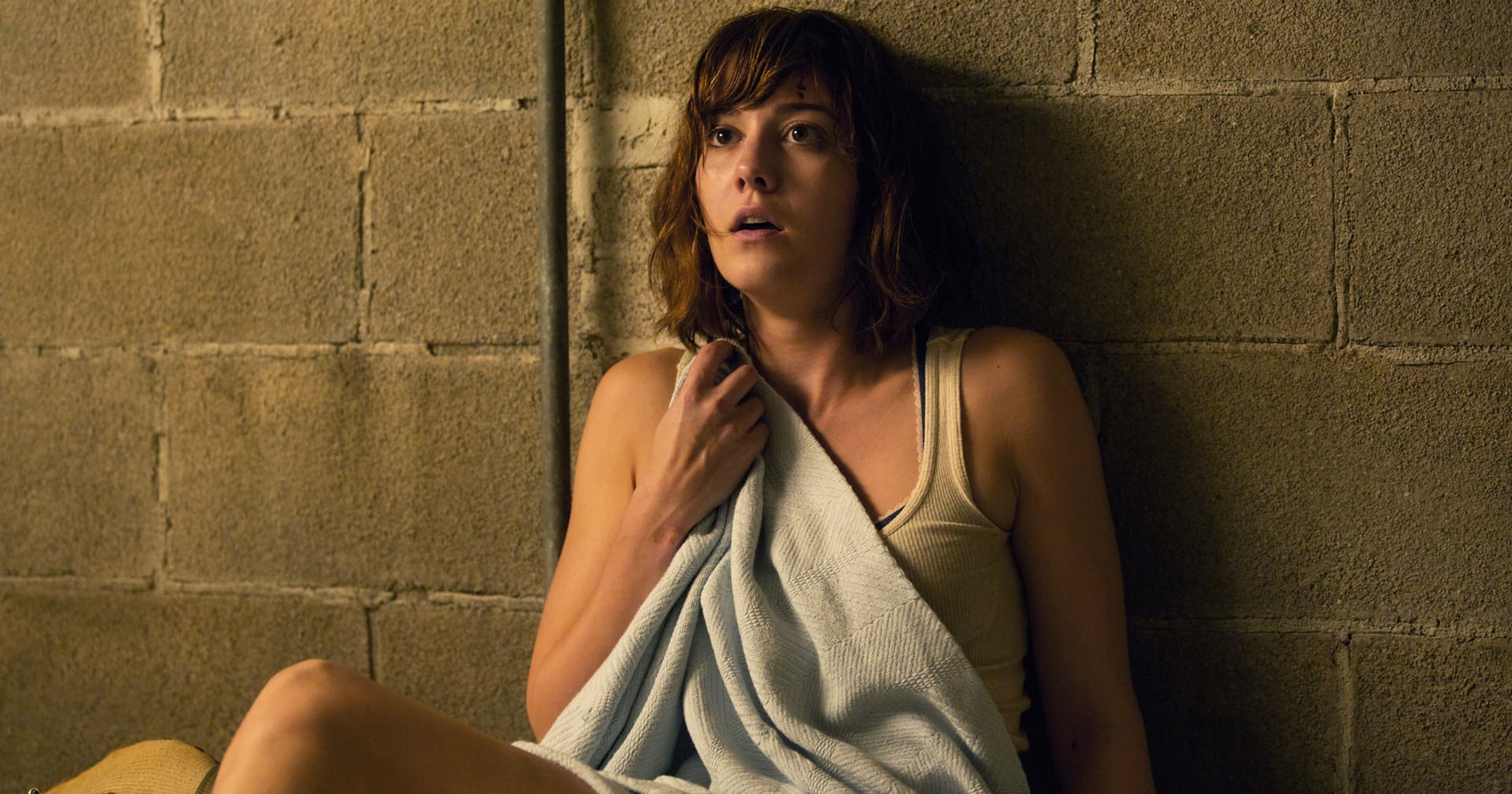
She has a car accident, waking up in the custody of a stranger named Howard (John Goodman). Howard has chained her to a radiator and trapped her in an underground bunker, claiming it is for her own good. When Michelle asks to contact her family to let them know she is okay, Howard responds, “Michelle, they’re not okay.” She replies, “How do you know that?” Howard explains, “Everyone outside of here is dead.” Howard believes the world has ended.
Once Michelle is inside the bunker, 10 Cloverfield Lane deliberately situates the audience in her headspace; little is shown that she does not witness, and the camera is frequently positioned to suggest voyeuristically peering and leering through doors and around corners. Michelle often knows little more than what Howard tells her, and the film often leaves it up to Michelle and the audience how much they can believe.
Early on, Michelle hears the sound of crashing and yelling outside her room. Later on, she finds a bruised and battered young man named Emmett (John Gallagher Jr.). “What you heard earlier was him knocking over a shelf with a whole week’s worth of food, which he’s sorry for, correct?” Howard tells Michelle. The film never confirms whether this is actually what happened, and the possibility that something more sinister occurred is allowed to linger.
Howard’s behavior towards Emmett and Michelle is similar to that of abusers. He repeatedly lies to them. He is extremely controlling, even repeatedly insisting that Michelle use the bathroom to his schedule. Early on, he tells her, “You’ll learn to love cooking.” Later, he assures her, “I want us to be a happy family. You and me.” During one confrontation, he warns her, “I have shown you nothing but generosity and hospitality. I want you to apologize. To tell me you’re going to behave.”
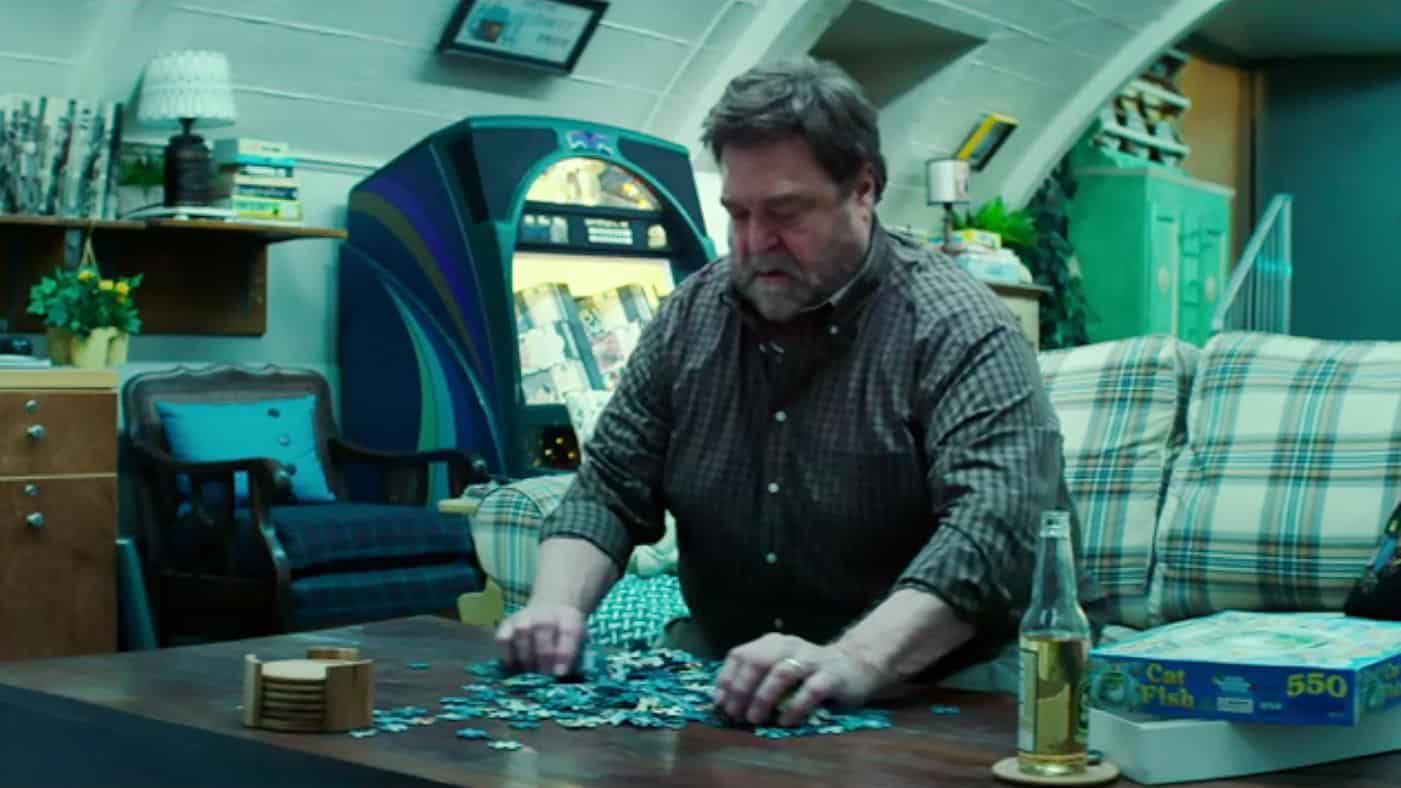
10 Cloverfield Lane received a sizable script polish from Damien Chazelle, which radically reworked the dynamic between Michelle and Howard. This makes sense, as Chazelle captured a similarly abusive dynamic between Andrew Neiman (Miles Teller) and his teacher Terence Fletcher (J.K. Simmons) in Whiplash. Much of the tension within 10 Cloverfield Lane lies in the uncertainty about Howard, with the film favoring mounting suspense over sudden reveals.
In one conversation with Emmett, Michelle reveals that she was the victim of child abuse. Recalling watching a father pulling his daughter along, she confesses, “I know that feeling. When my dad got that way, my brother Colin was always there to take the worst of it for me. And I thought, seeing this little girl, I thought maybe I could do that for her. But I just kept watching.” Michelle has apparently avoided confronting her trauma, and 10 Cloverfield Lane is designed to force her to do so.
Howard’s bunker becomes a horrific metaphor for a toxic home environment, the horrific subtext bubbling against the illusion of domestic bliss suggested by movie nights, dinners, jukeboxes, ice cream, and game nights. One of the movie’s most revealing moments comes during a game of Taboo, when Howard is unable to guess the title of Little Women because he sees Michelle as “a girl,” “a child,” and “a little princess,” but not as an adult woman.
At the climax, Howard becomes a rampaging monster chasing Michelle through the bunker. 10 Cloverfield Lane makes a point to mirror Howard’s rage at Michelle with Ben’s early phone call. “You gonna walk out on me?” Howard demands. “After I saved you and kept you safe, this is how you repay me.” He roars, “Stay with me.” Earlier Ben had made a similar appeal, “I can’t believe you just left.” He also implored, “Come back.” This time, Michelle can’t avoid a confrontation.
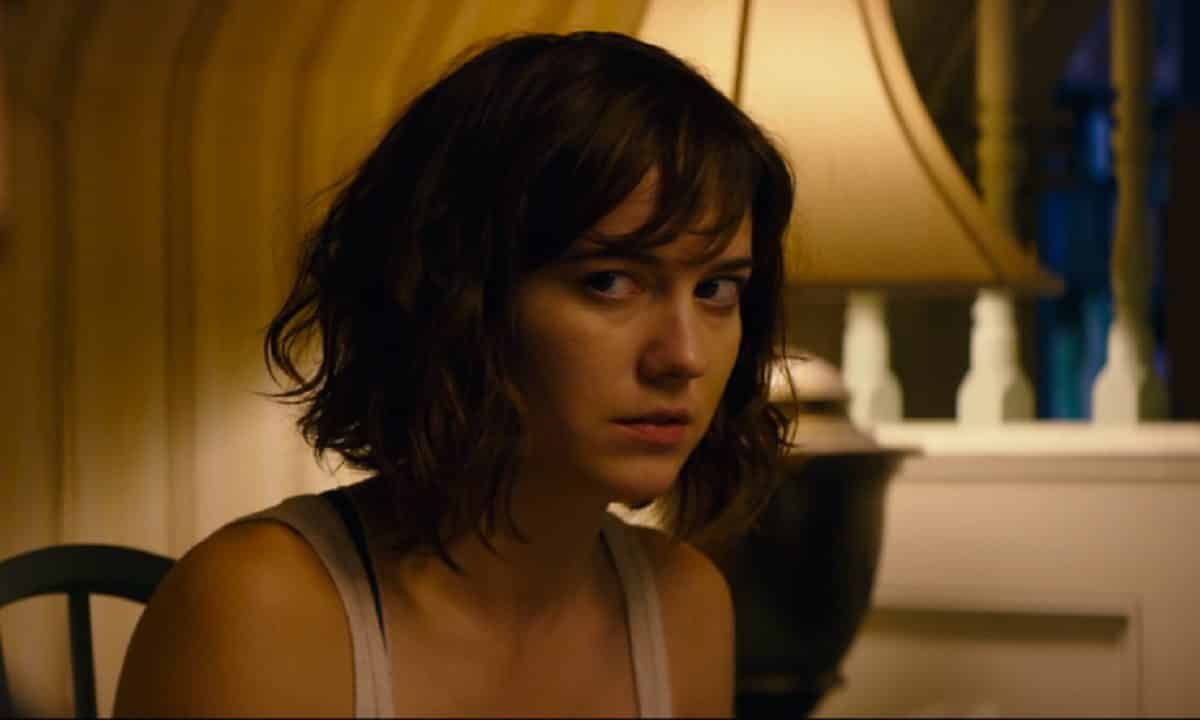
Of course, the twist at the end of 10 Cloverfield Lane is that Howard wasn’t completely lying. The world has ended and not just metaphorically. Outside the bunker, Michelle finds herself in the midst of a monstrous invasion. The metaphor receives another layer. It’s a daring choice — and perhaps a divisive one. However, the third act twist works as a reminder that the sort of monstrosity that Howard was perpetrating inside the bunker doesn’t only happen behind closed doors. As below, so above.
In hindsight, the wave of claustrophobic paranoid thrillers like 10 Cloverfield Lane seemed to predict the coming cultural moment — an era of heightened polarization and mistrust, but also one in which nostalgia turned toxic and women and minorities found their rights under assault in the public sphere. As with movies like The Hateful Eight and Green Room, 10 Cloverfield Lane suggests there was something monstrous stirring in the shadows, waiting to emerge into the open.
The closing moments of 10 Cloverfield Lane reinforce this point, as Michelle is caught at a literal crossroads between retreating to safety or using her “combat experience” to help other survivors. The film’s closing moments confirm that Michelle can no longer simply ignore the monsters lurking in the darkness — she must confront it head on.

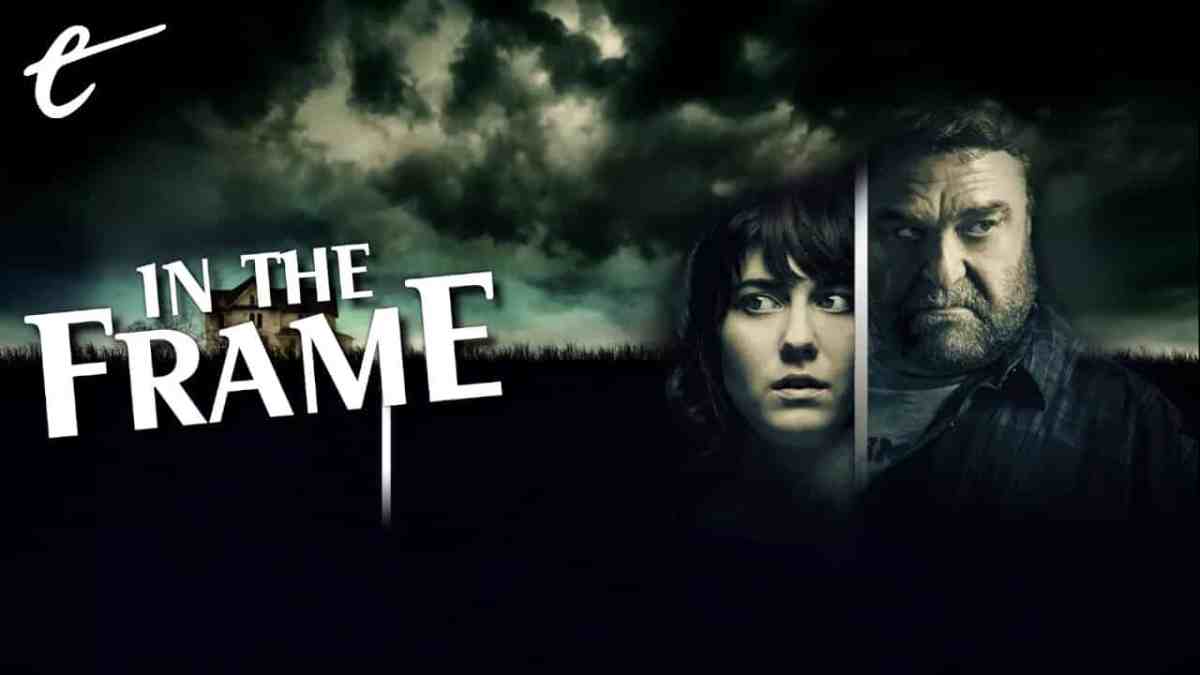




Published: Mar 8, 2021 11:00 am